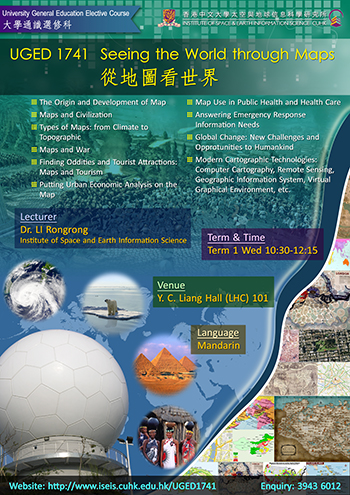
Maps are not just for "doing geography". People use maps in many disciplines, in their daily lives, in finding their way about town, in planning and in decision making. As a platform for displaying spatial information, maps have been used to depict and reveal spatial distribution and association and dynamic changes of various natural and social phenomena. Systematic analysis of laws, comprehensive evaluation, accurate forecast, rational planning, and efficient management can be achieved by using maps. This course introduces students the fundamental knowledge of maps, including the origin and development of maps, the social benefits and historical effects of maps, basic theory and technique of map use, different maps and their functions, and diversified applications of maps in the fields of national defense, economy, transportation, emergency response, public health, global change, etc. Modern cartographic technologies, such as computer cartography, remote sensing, geographic information system, and virtual graphical environment are also covered. Upon completion of this course, students are expected to appreciate the history and evolution of maps and their associated socio-economic and cultural contexts, to understand and apply basic concepts and skills in map use, to present data in the form of maps and to extract useful information from maps using the skills learned in class.
Lecturer: Dr. Li Rongrong, Institute of Space and Earth Information Science
Language: Mandarin
Offering Term: Term 1
Time: Wednesday 10:30-12:15 (W3-4)
Venue: Y. C. Liang Hall 101 (LHC 101)
Enrolment Requirements: Not for GRM and Urban Studies Majors; Co-requisite: UGFH1000 or UGFN1000 (Only applicable to students admitted to the 4-year curriculum)
Upon successful completion of this course, students are expected to:
Lectures:
Tutorials: